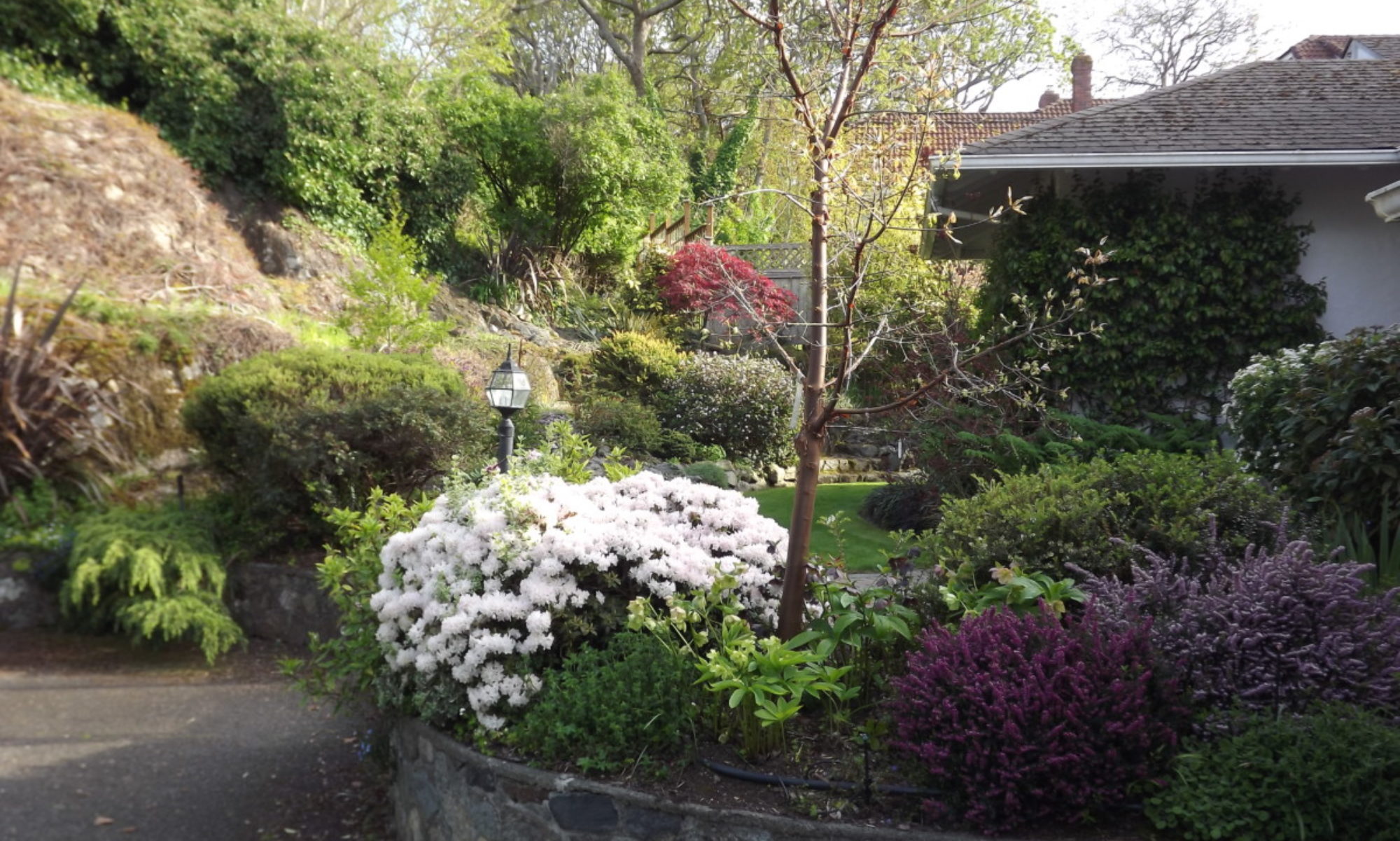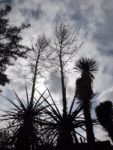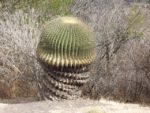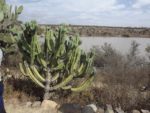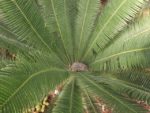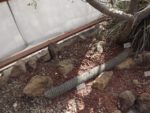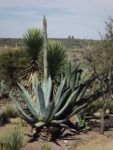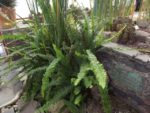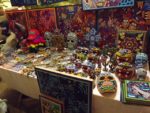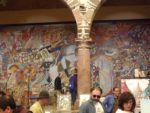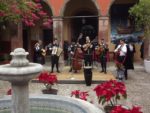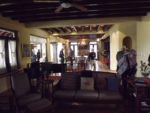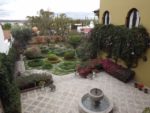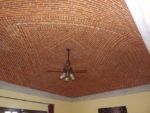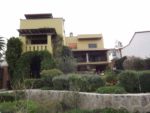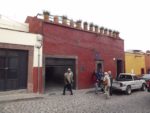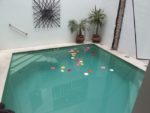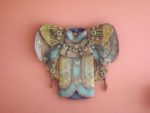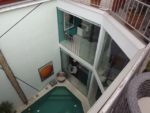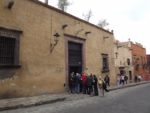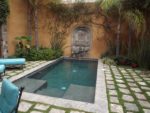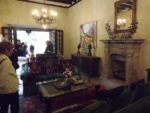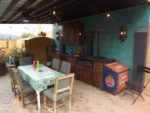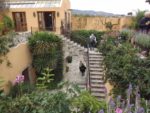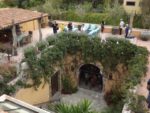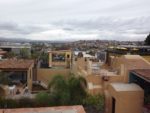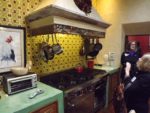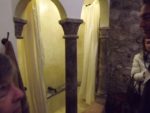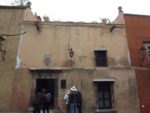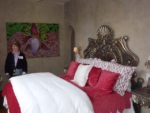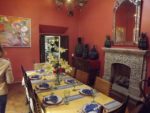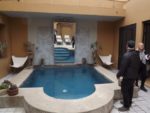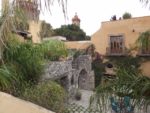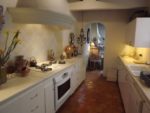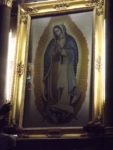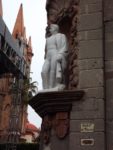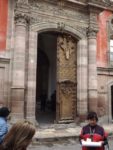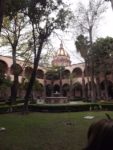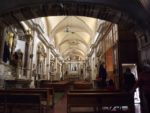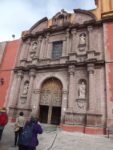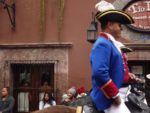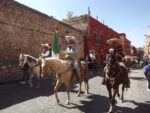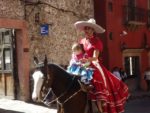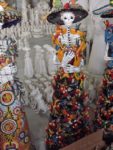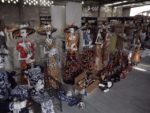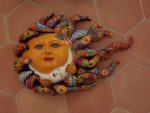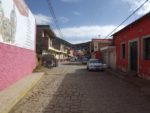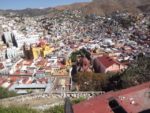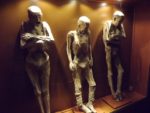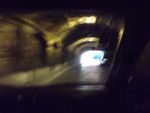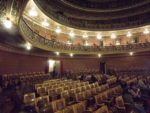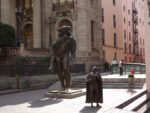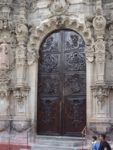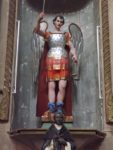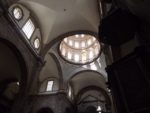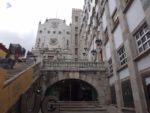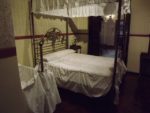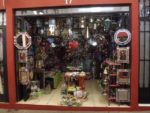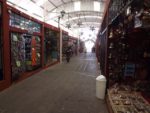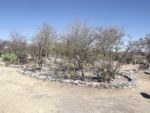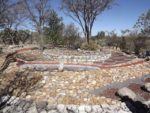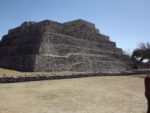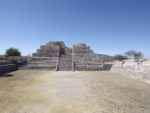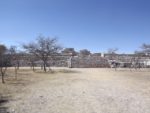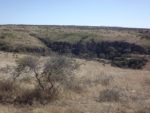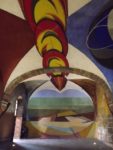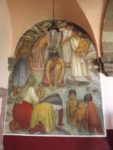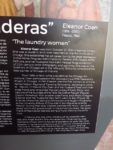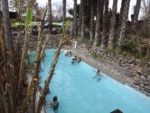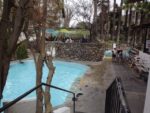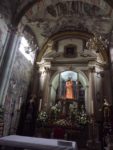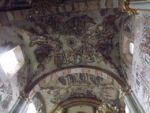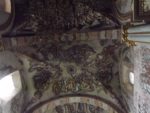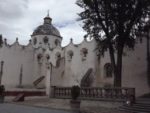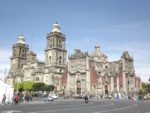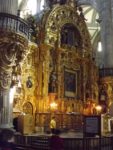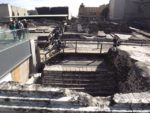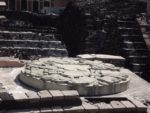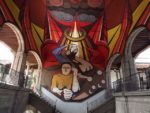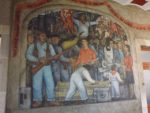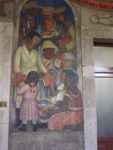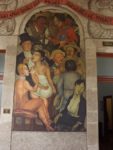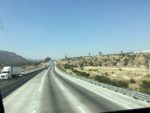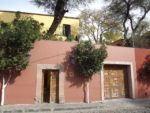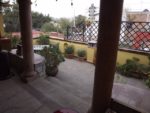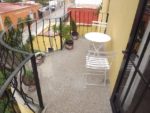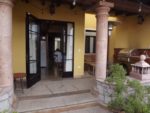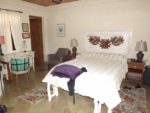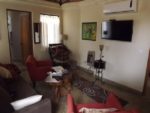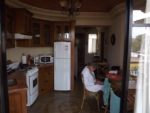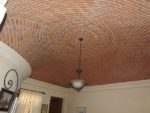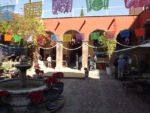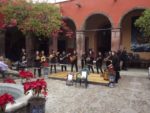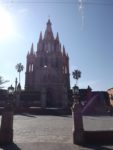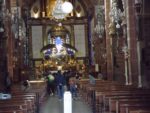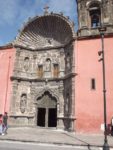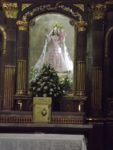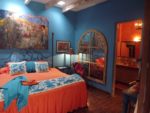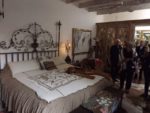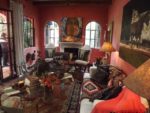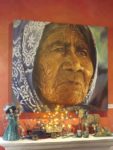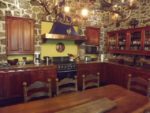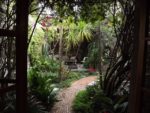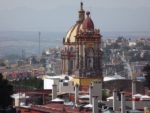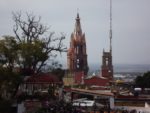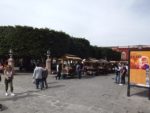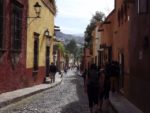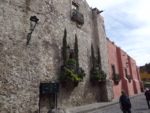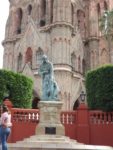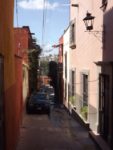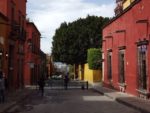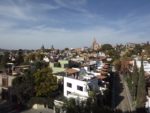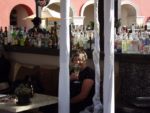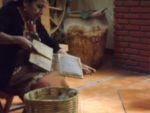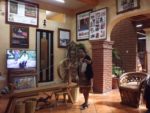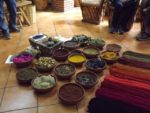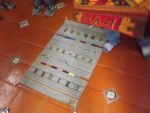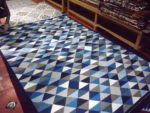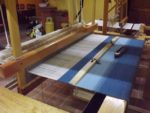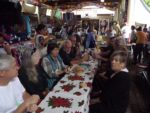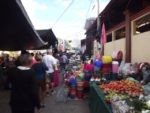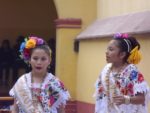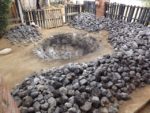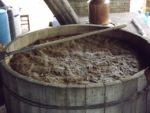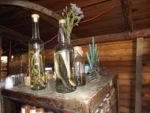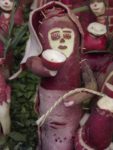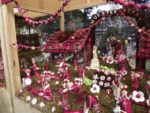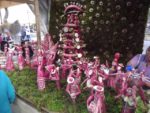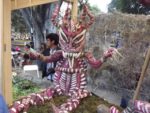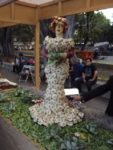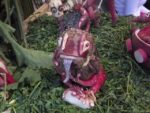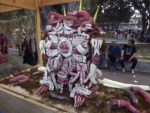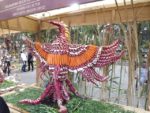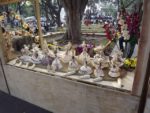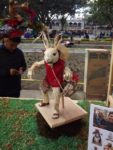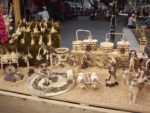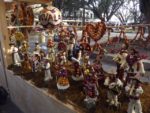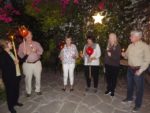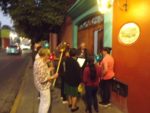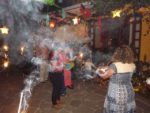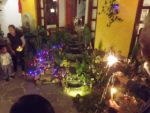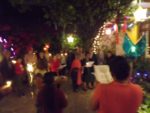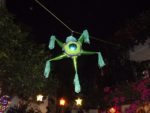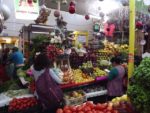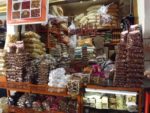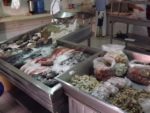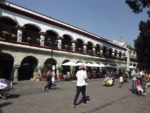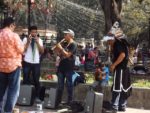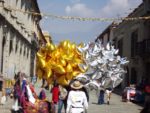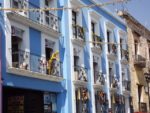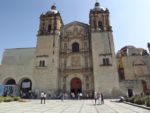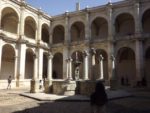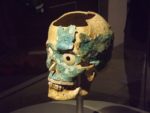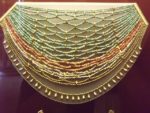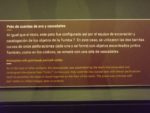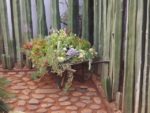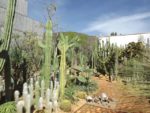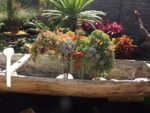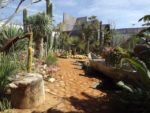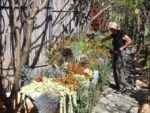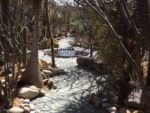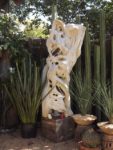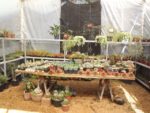Continuing in San Miguel de Allende:
A visit to the Botanical Garden, situated right at the edge of town is highly recommended. It covers 88 hectares and is also a wildlife and bird sanctuary. We took the English language guided tour, given by their ornithologist. It was obvious where his real passion lay as the appearance of any bird made him much more excited than the vast selection of cacti and native plants. The garden was truly drought tolerant but, in summer, after the rains, the ferns and mosses all green up and there are wildflowers everywhere. We did see colour and flowers on the cacti and succulents in the Conservatory of Mexican Plants.
Each Sunday there is a House and Garden Tour, organized as a fundraiser for the Library. We have found these fascinating as they provide such an insight into the range of accommodation available here. Our first house two weekends ago was in a huge, gated subdivision right at the edge of town. The Americans who owned it seemed to have indulged their fantasies. There were umpteen bathrooms and a man cave, featuring a bar, a huge flat screen TV and a magnificent sound system. The wife, a dancer, had greatly admired the hippo in Fantasia. Consequently there were hippos everywhere in all shapes and sizes. Chacun a son gout! The second house was such a contrast, owned by a collector of artefacts from around the world. This eclectic selection had been curated and beautifully displayed with such attention to detail. He had even floated Gerbera flowers on the surface of his pool.
The tour we went on last weekend was of two town houses side by side on one of the most historic streets called Canal. They certainly did not have kerb appeal as there were huge stone walls with access by massive wooden doors. Inside was like another world with Casa Abejas, definitely the nicer of the two, divided in two parts round a magnificent swimming pool. Although it certainly had all mod cons and was very luxurious, the interior could not have been described as cosy. What both properties had was magnificent upper terraces with spectacular views of the city with the churches on the skyline.
We also had the opportunity to visit Beatriz and Dan, whose casita Liz and Ken rented. They retired here from LA six years ago and built a home right downtown on a derelict pecan orchard. We were impressed by how right it seemed for the setting.
Another fundraiser for the Library is the two hour historic walking tour, given by a retired American, possibly drama, teacher. She was an excellent guide, obviously passionate about her subject but very entertaining too. We took the tour on a national holiday with a parade featuring school groups, marching brass bands and gauchos on horseback. That meant street closures and lots of noise. Our guide was able to adapt the tour and provided a wealth of historical information. She informed us that the courtyard settings of the fancy restaurants that I thought resembled the ones in Marrakesh were, in fact, the stables and the planters were horse troughs!
The library also organizes tours to areas of interest outside town so we decided to visit Guanajuato, the state capital, an hour’s drive away. It took us much longer as our driver routed us through the mountains so that we could visit a ceramics workshop and a women’s cooperative, providing funds for families whose breadwinner had gone to find work in the States and never returned. Guanajuato is also a very wealthy place due to the silver mines close by. Although this was a huge source of revenue in Spanish colonial times, the deposits are so rich that now the silver is being mined for the electronics industry. It is a fascinating city with a totally pedestrianized core – the traffic being diverted through underground tunnels which originally were built to divert the river. It is also a university town with the best law school in Mexico. Our first stop was the Mummy Museum, a macabre place featuring corpses that had died during a cholera epidemic. There were too many to bury individually, but the minerals in the soil naturally desiccated the bodies and clothing and body hair were still evident almost 200 years later. A visit to the Opera House was an example of town’s wealth as was the tour of the many churches . Our last stop was Diego Rivera’s house, now an art gallery, featuring the evolution of his painting style throughout his lifetime starting at the age of 11. Our guide recommended lunch in a very swanky restaurant on the main square. Their specialty was tweaking traditional Mexican fare and we had tacos, the filling contained within shaved jicama – delicious!
The tour we took yesterday, again through the Library, to Cañada de la Virgen, was really quite disappointing. We are very interested in this area’s early history and have made a point of visiting ruins in Mexico and Guatemala. We were a group of three and had our own guide, only to find that there was an “English” speaking guide provided by the site. His explanations were incomprehensible and he did not understand our attempts to achieve some clarity. Too bad! The site had been discovered in 1982 and parts of it are still being excavated.
Now we have only three days left under the blue skies and sunshine, having escaped what seems to have been such a sodden, stormy time in Victoria. Mostly the weather has been sunny and warm although in San Miguel it felt pretty chilly after 4pm and before 10 am and we were glad of the gas fires in our accommodation. There were a couple of days in the last week when Victoria was 3° warmer than here in the morning! We have certainly enjoyed the contrasts between our three destination and were quite unprepared for the charm, beauty and affluence of San Miguel. We can quite understand why so many people, particularly artists, have made it their winter home. The Library, with its fundraising activities for the education of girls and women, provided a meeting place for the gringo community, who, for the most part, made us seem quite young and sprightly! All in all, having visited the majority of the coastal resorts, we found this holiday offered so much more in terms of interest and culture and thoroughly appreciated the opportunity to sample so many new experiences.
Addendum…
In our last couple of days we visited one art gallery in town and a couple of places about a 20 minute drive out of SMA (120 peso by taxi each way or $8). The art gallery was in the old nunnery and is called Bellas Artes with many exhibits and including some striking murals. Out of town we visited the town of Atotonilco where there was a hot pool/spa complex rated highly by the Lonely Planet. Maybe it was off season and too cold, but it looked rather run down and unappealing to us. we had lunch but didn’t venture into the pools. Nearby was the Sanctuario Atotonilco the ceiling of which has been described as the Sistine chapel of Mexico. Not much competition with the real thing!
So
